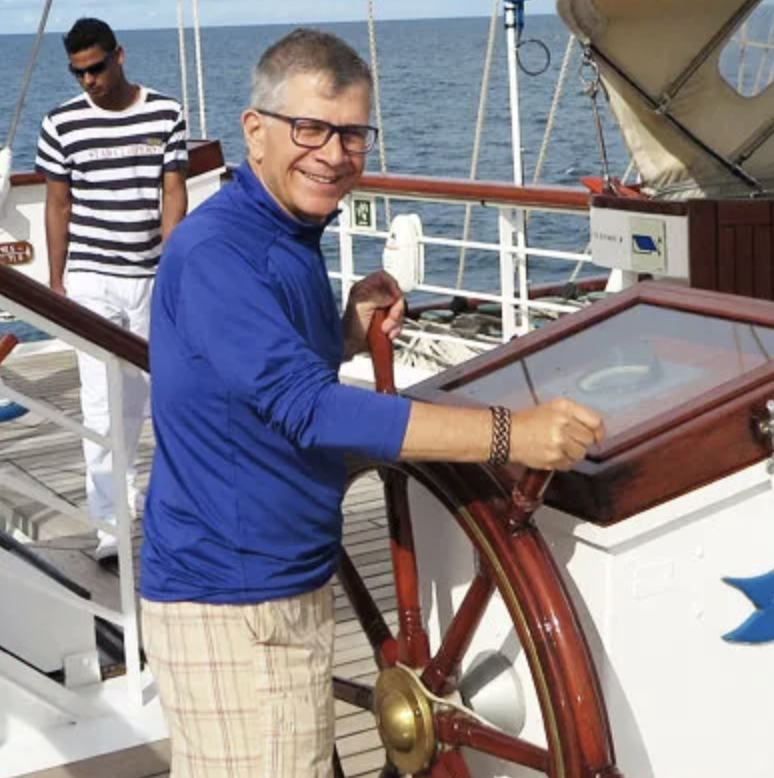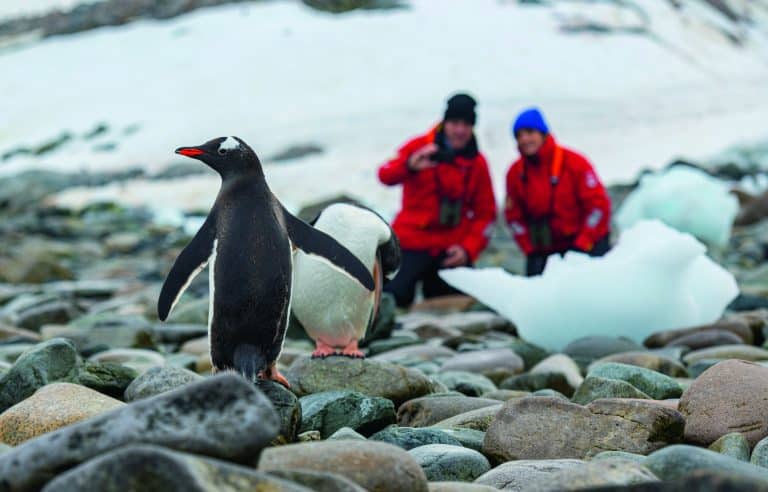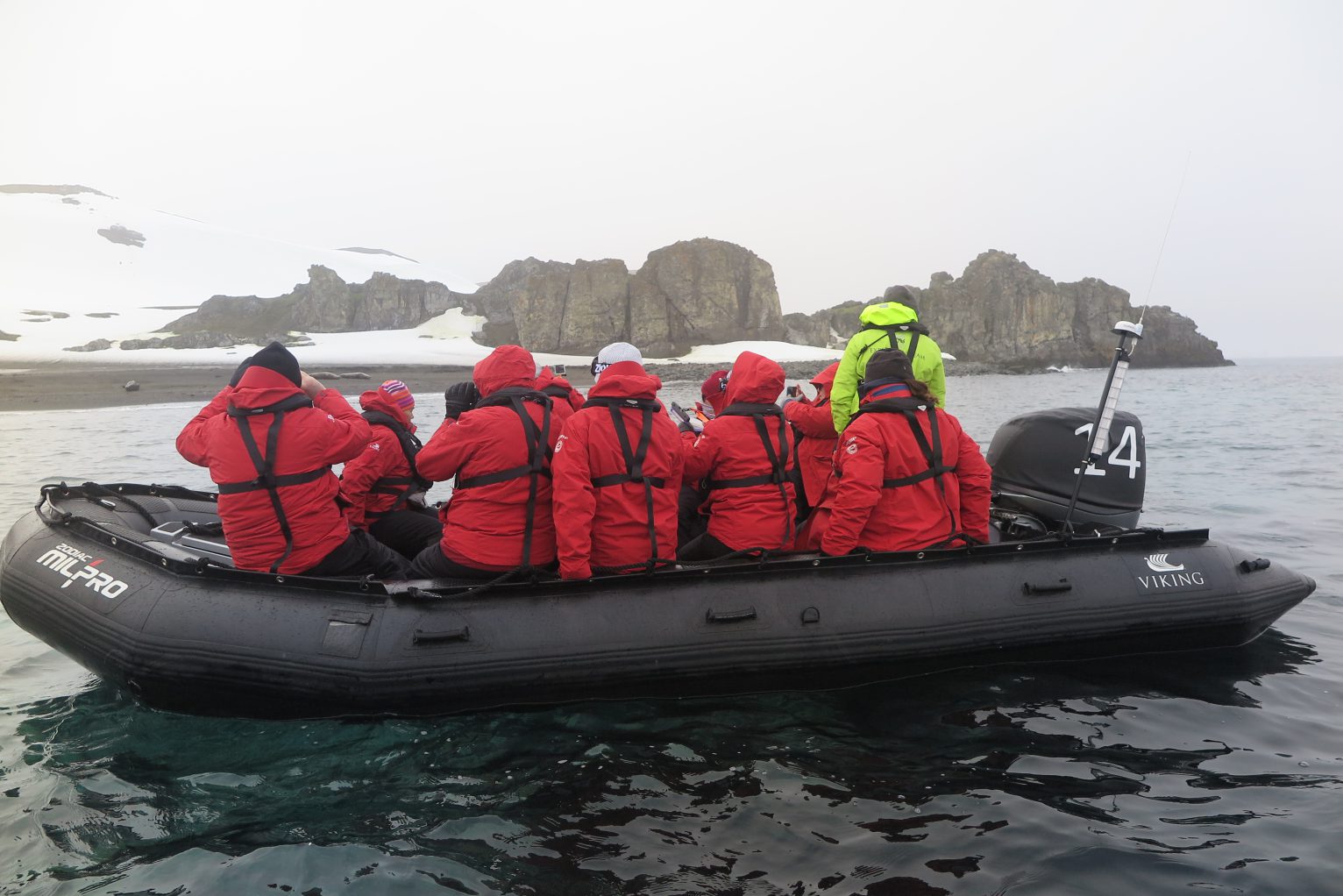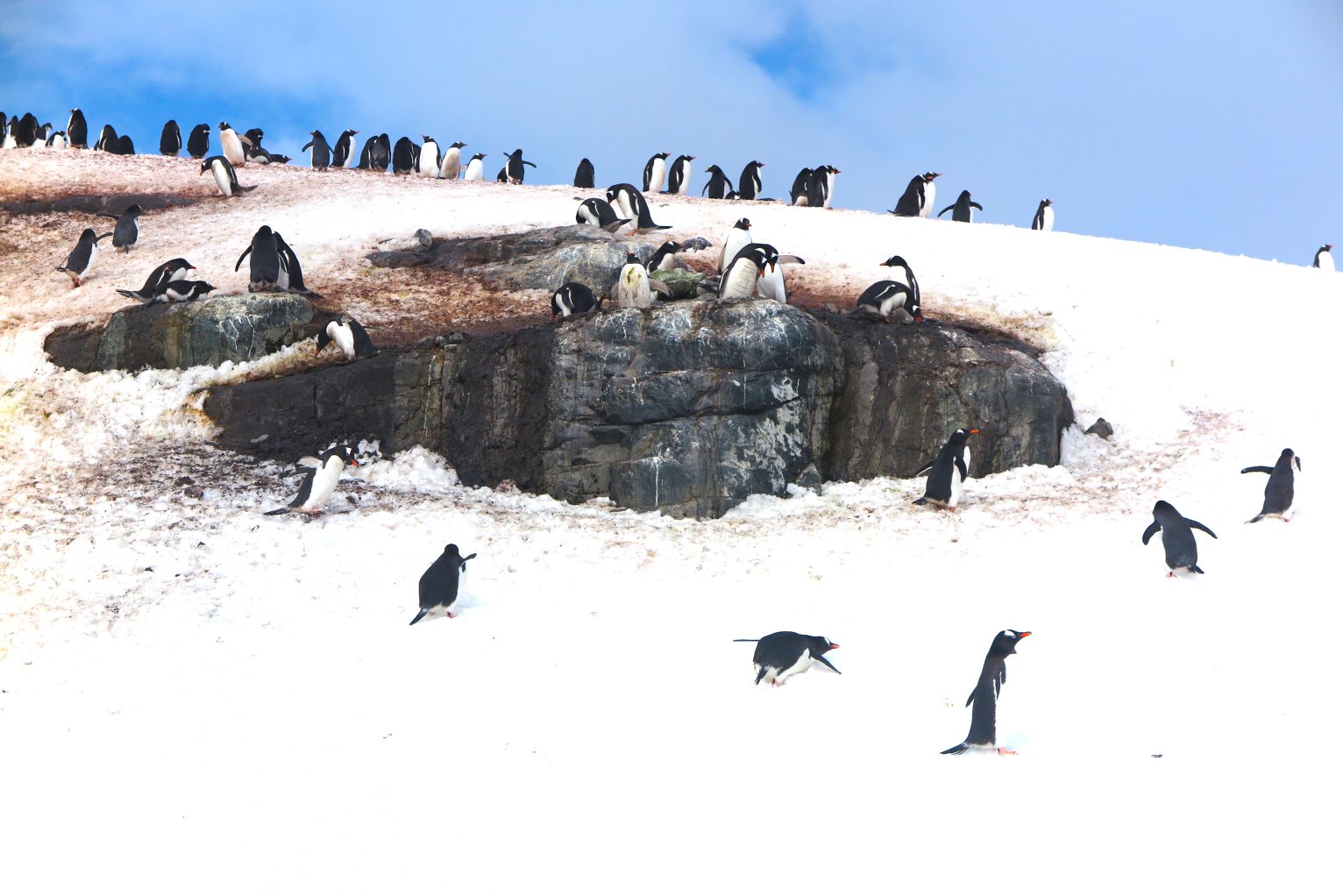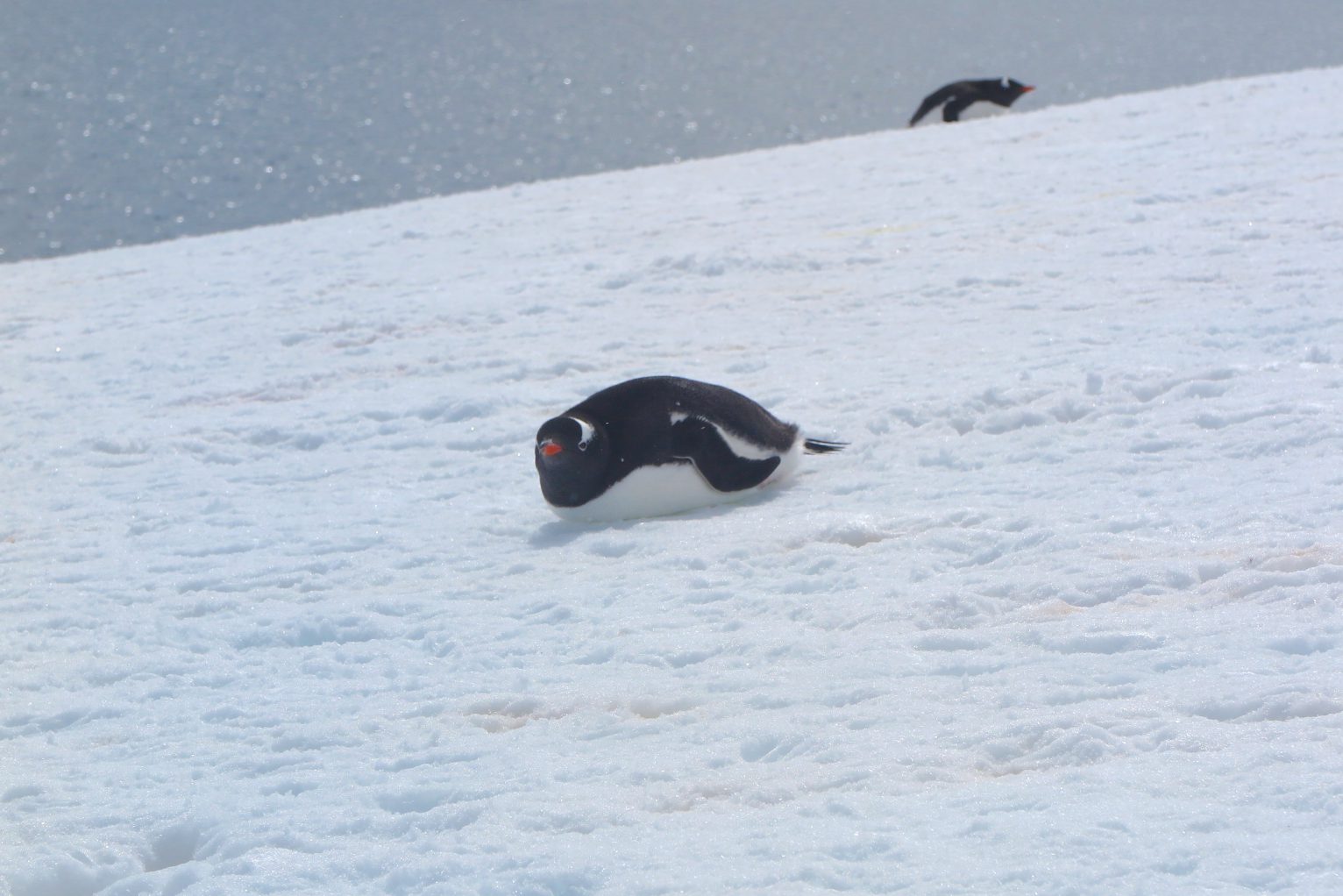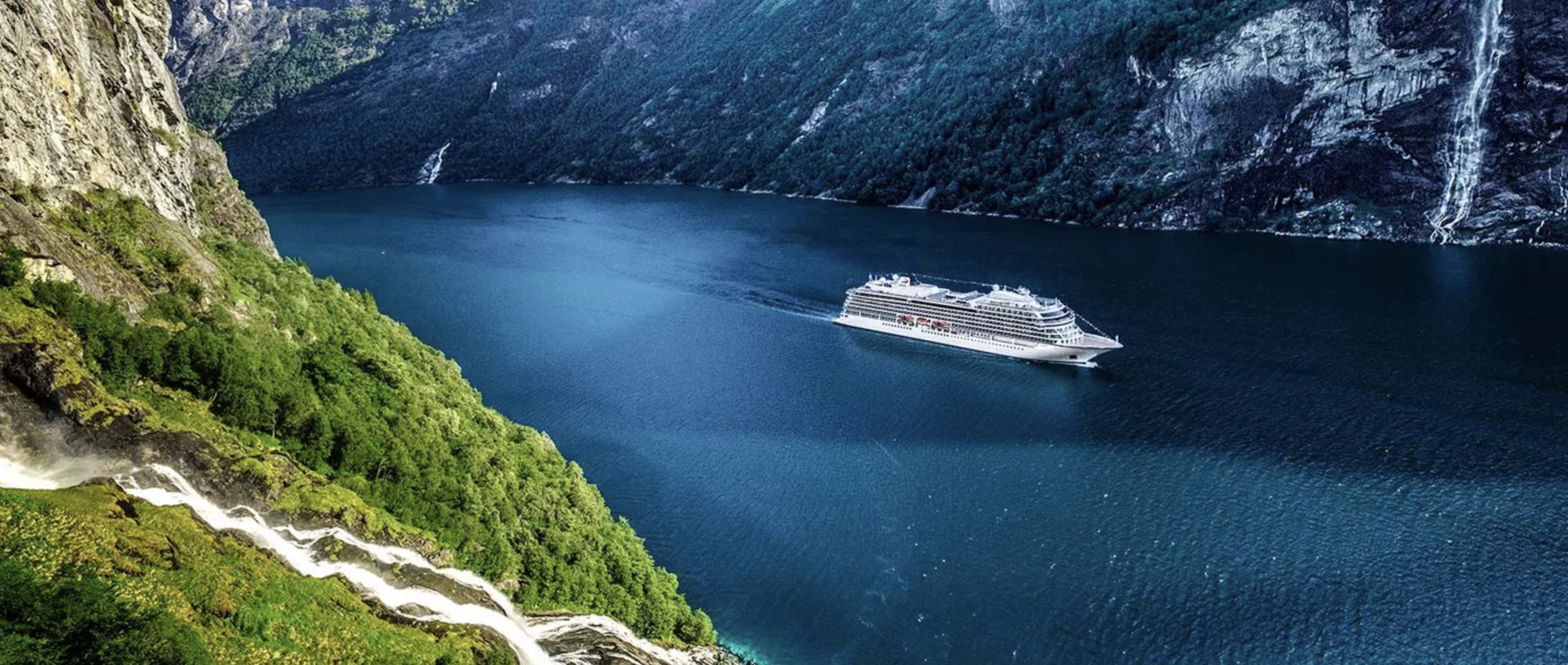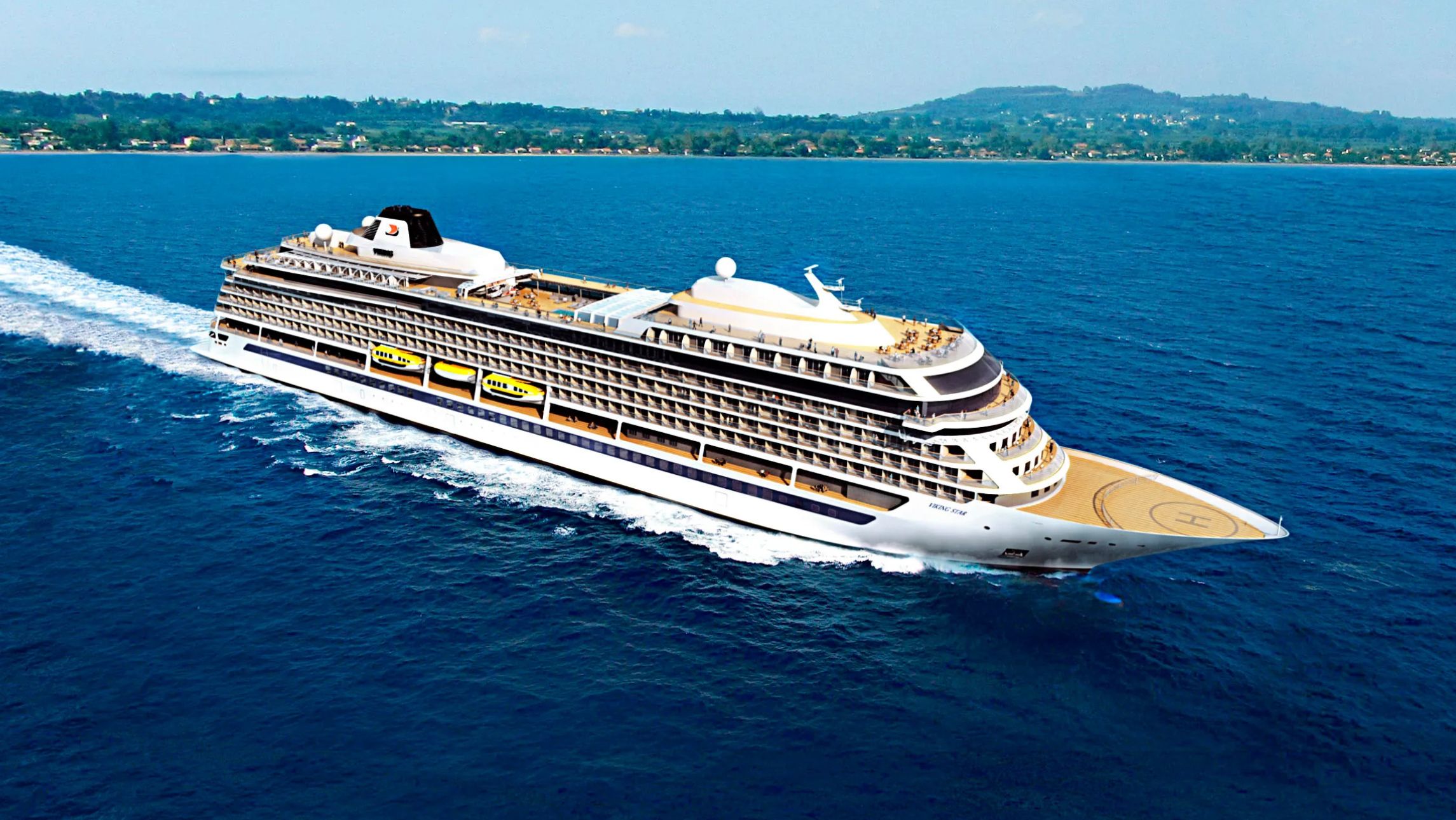In a world filled with greenwashing gobbledygook, “travelling with purpose” is a phrase you hear a lot nowadays.
But if there is one place that really brings home the perilous state of our planet and the need for change, it is Antarctica.
Here, the balance of nature is a matter of life and death for so many species. It’s a vast white wilderness where you truly realise the forces climate change has unleashed – and that we humans aren’t as powerful as we like to think.
According to the treaty of 12 nations signed in 1959, Antarctica was forever to be “used for peaceful purposes only”. But today, the White Continent needs our support. Antarctica is a land in peril – superpowers Russia and China are eyeing its minerals and factory ships are stealing its vital stocks of fish and krill. And its ice is melting.
But help is at hand in the unlikely guise of travellers like us. We are here to bear witness and take the message home. I am, I hope, doing my bit.
We are on board the Viking Polaris, one of a pair of new ships from the leader in river and ocean cruising. Once again, Viking is setting a new benchmark – this time in adventure.
Our expedition leader, Marc Jansen, is welcoming us in the Aula, a panoramic auditorium inspired by the University of Oslo’s famed ceremonial hall, the former venue for the Nobel Peace Prize ceremony. Outside is Finse Terrace, where you can sit around a brazier and have drinks.
“We want to turn you into advocates and ambassadors,” he declares. “This really is a journey with purpose. We want you to go back to your homes and tell your friends about this place, and remind everyone that it needs to stay free from interference.”
The lounge is one of an array of firsts on this ship. Below us, a pair of submarines, a speed boat powered by two jet engines made for the Finnish navy and military Zodiacs are in the hangar awaiting us.
Some 200 Americans, Brits and Australians have made the journey across the planet to this incredible place, drawn by stories of the great explorers, bucket-list ambitions or simply a desire to experience something different.
They won’t be disappointed.
Jansen makes it plain that, here, Mother Nature is Queen. Schedules are all very well, but they will be abandoned in a heartbeat if a storm blows in.
Captain Margrith Ettlin, Viking’s first female captain, puts it even more starkly: “This is not a vacation – it’s an expedition!”
Soon, we are all on the Windy app, watching for weather breaks that will mean our trips onto the ice will go ahead as scheduled. We are consumed by the sky, glory in sunsets over ice flows, giggle like kids at penguins swimming around our ship or falling on their bellies in the snow, stand in awe as whales breach, and are driven to tears when a leopard seal snatches a chinstrap penguin for lunch.
It is nature at its rawest and most profound. And it is like nothing most of us have experienced before.
But the good news is that, unlike many of the explorers depicted in the black-and-white historic photographs that adorn the corridors of our ship – they used horses, dogs and even their own brawn to pull their sleds – Viking Polaris conveys us to one of the world’s most inhospitable places in astonishing comfort.
Capt Ettlin is rather proud of her new charge. Just six weeks old, she flies across the Drake Passage at a racy 17 knots.
The passage is notorious among seafarers and once you would have strapped yourself into your bunk for a bumpy three-day ride on a good day. Tonight, as we toast our adventure’s beginning with Viking’s included wines and beers, it’s “Drake’s Lake”. Our stabilisers are not really necessary.
“She’s a very fast ship,” the captain says at a reception in the Hide, a nifty bar in the bows of Polaris where waves break over the glass and the expedition team tell us their stories every night.
Capt Ettlin brilliantly outruns the weather, taking us to Half Moon Island at temperatures of five degrees and wind speeds of 15 knots, allowing us precious hours to go ashore and see the wildlife.
Viking Polaris’s submarines Ringo and George – yes, they are yellow, so they get Beatles’ names – are out on the water by 7am. Zodiacs are rescheduled to take in the window – and as a result, we get amazing experiences on land, watching the penguins build their nests for the coming breeding season.
The Hangar has a unique slide that allows us to board the speed boat inside the vessel. She is then launched down the slide and onto the water for a high-speed ride past icebergs and penguin highways.
By 2pm we are underway again, outrunning 55-knot winds and a swell, sheltering next to a glacier for the night before setting off on our next adventure.
The 20-strong expedition team are keen to recruit us for citizen science projects to monitor krill and plankton, and check whales’ tails (the Happy Whale project sends pictures to universities monitoring the giant mammals’ movements, and their tail fins are like fingerprints, apparently). Polaris has labs on board that take part in serious science research – they report to NASA, and have recently published their first scientific paper (bear in mind the ship is on her fourth journey since launch).
But there is more to her – which is why we think Viking might have done for expedition what it did for ocean cruising: created a new class.
Viking Polaris and her sister, Viking Octantis, have blended real adventure with luxury cruising.
There are many references to the fleet that took out the Best Ocean Line award in our Readers’ Choice Awards of 2022. Great food, fantastic cabin design – but more importantly a young expedition and scientific team full of enthusiasm. Australia has quickly become Viking Expeditions’ second biggest market.
“Antarctica is a very special place and it’s such a privilege for any of us to come here, along with just one per cent of the world’s population,” says Viking Australasia MD Michelle Black.
The Viking Polaris carries 378 guests in 189 outside staterooms with Nordic balconies. These are extraordinary – the cabin’s floor-to-ceiling windows open at the top to allow you to take in the Antarctic breeze while remaining warm and dry in your cabin. Handy binoculars allow for in-house wildlife spotting.
There’s an even more surreal experience waiting for you in the stunning Nordic Spa. You can swim in the warm waters while looking out over the ice – or sit in a sauna and look at the scenery through an open window. In case you haven’t had enough during your shore expeditions, there is a snow grotto and an ice shower.
The suites are designed for the adventurer. A big bathroom and shower, heaps of storage for those thermals and even a heated cabinet so you can dry the supplied anorak and fleece that are yours to take away (boots and waterproof trousers are provided but have to be returned).
Expedition Central on Deck 2 is where the action is – Dr Daniel Moore and his team brief on expeditions and introduce citizen science projects, while Australian polar historian and author David McGonigal explains the peculiar stories of explorers of the past.
The extensive Living Room and Library, with floor-to-ceiling windows and an incredible stock of large-format books, has an array of nooks with look-alike open fires to curl up by. In the early evening, a pianist and cellist play classics.
The food is a huge part of the journey, with six venues including our personal Viking favourites, Manfredi’s Italian, Mamsen’s Norwegian Deli and the World Café. And drinks after dinner in the Explorer’s Lounge are a great way to swap stories and show pictures.
But back to the job at hand – exploring.
From the start, safety is a priority. So before we are allowed to take a submarine dive in Ringo, we need to pass a fitness test. Thankfully, I am only asked to bend my knees. Pass!
This is quickly followed by Zodiac training. Getting in and out of these vessels – which are perfect for what the crew refers to as “wet landings” – just needs a bit of technique. You shuffle along on your backside and then swing your legs over. Easy!
Before we are allowed onto the ice from the special tender dock, we vacuum our clothes and wash our boots to ensure we’re not carrying disease to the penguin colonies.
Lifejackets, gloves, goggles, beanies and neck gaiters are checked by the crew before we depart.
Once aboard a Zodiac, usually helmed by one of the expedition crew – marine biologists, glaciologists, historians and ornithologists – our adventure begins.
At one point we arrive on an island unexplored for more than 80 years. Ex-Royal Marine Gavin Emmerson and his team have cut an ice staircase for us to land on, and we are guided with ski sticks to where curious gentoo penguins are waiting.
Back on the ship, with our expedition gear drying in our cabin’s warming cabinet, it’s time to exchange stories in the bar.
We learned a lot about the adventures of early Antarctic expeditions. How they took horses so they could eat them along the route, and how they would be holed up for weeks by the weather, existing on tinned meat or fish.
With a glass of Chilean Malbec in my hand, and my toes toasting on the (albeit digital) fireplace, I’m glad to be among today’s more comfortable adventurers.
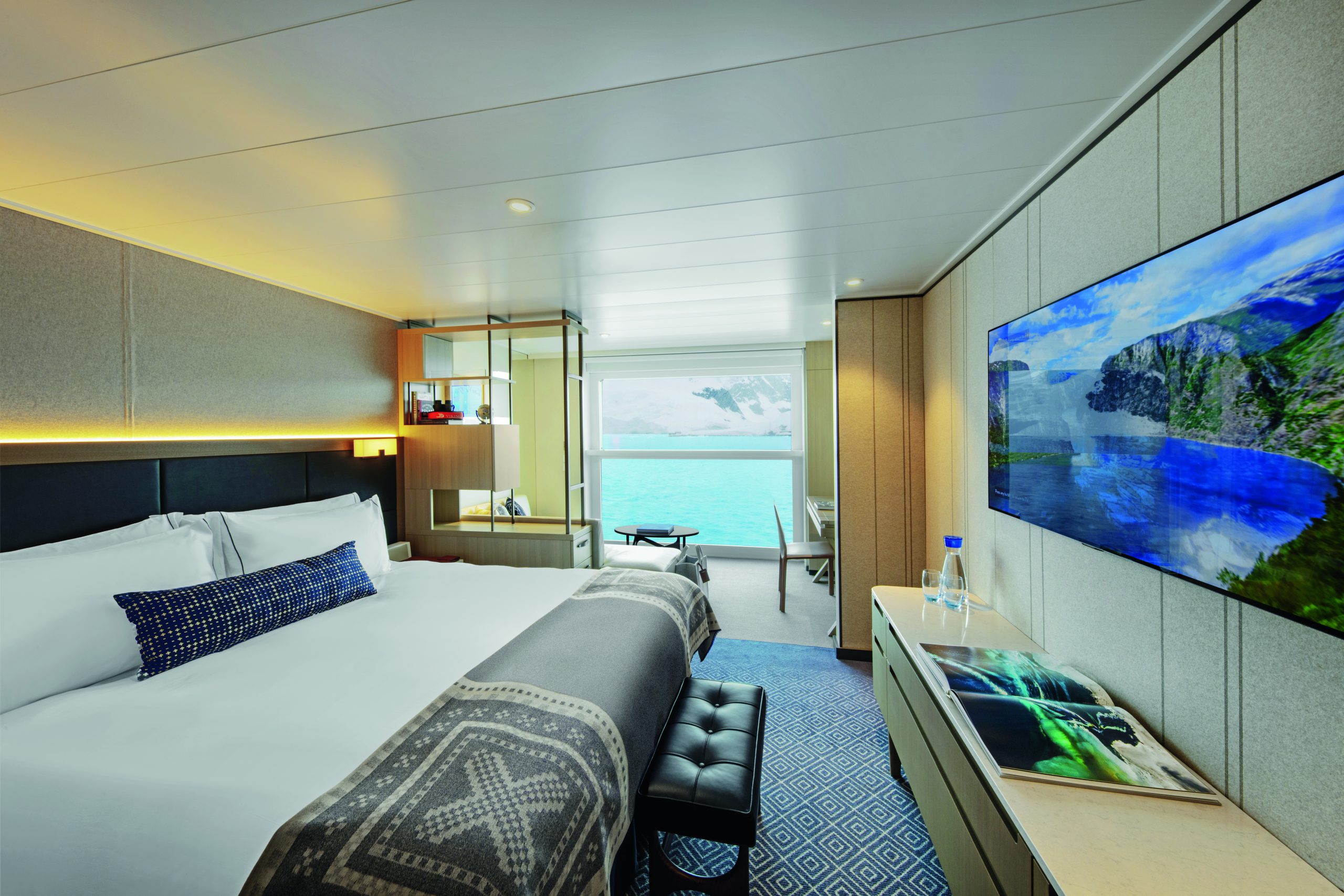
Concierge
No cruise has excited so many dinner-party questions as my trip to Antarctica. Everyone is curious – so here are five of the most common queries:
- Was it cold? It went below zero and at one point the ship was covered in snow. I raided my local Kathmandu and Paddy Pallin stores and bought thermals to wear under a provided fleece and outer anorak, two pairs of ski gloves, a neck gaiter (essential), thick socks and a beanie. I wore thermal underwear, jeans and Viking waterproof trousers and very good waterproof boots. I was never cold. The ship was very toasty throughout the trip, and we dressed casually most of the time on board.
- What was it like in the submarine? The journey down was full of ‘Dive! Dive! Dive!’ excitement, with safety lectures from our “captain”. There are six passengers in the sub, so it’s a tight squeeze. We photographed lots of interesting plants which got the Expedition Team very excited (they were immediately despatched to a university studying the ocean floor). And we saw an icefish, which had a huge mouth and enormous gills.
- Do you have to be fit? You do need mobility to get in and out of the Zodiacs and climb into the submarine. On the ice, you’ll be given ski sticks and guided where the crew feel there might be a risk of a fall. If you’ve been to the ski fields, you know what to expect. Common sense and care are all it takes.
- If you didn’t leave the ship, would it be worth going? Viking’s expedition ships are a destination in themselves, and I got as much joy and excitement standing on the deck watching whales as I did on the water or the ice. And many lines offer cruises past the ice or Antarctica without stopping.
- Is it safe? The captain’s words were so true: “It’s not a vacation – it’s an expedition”. Mother Nature rules, and accidents happen. While we were in Antarctica another expedition suffered a fatal accident on a Zodiac and on the next trip Polaris was hit by a “rogue wave” in the Drake. But every safety precaution is taken, the trained and experienced polar crew are always right next to you and I felt in very safe hands. It’s an epic adventure and well worth the trip outside your comfort zone!

